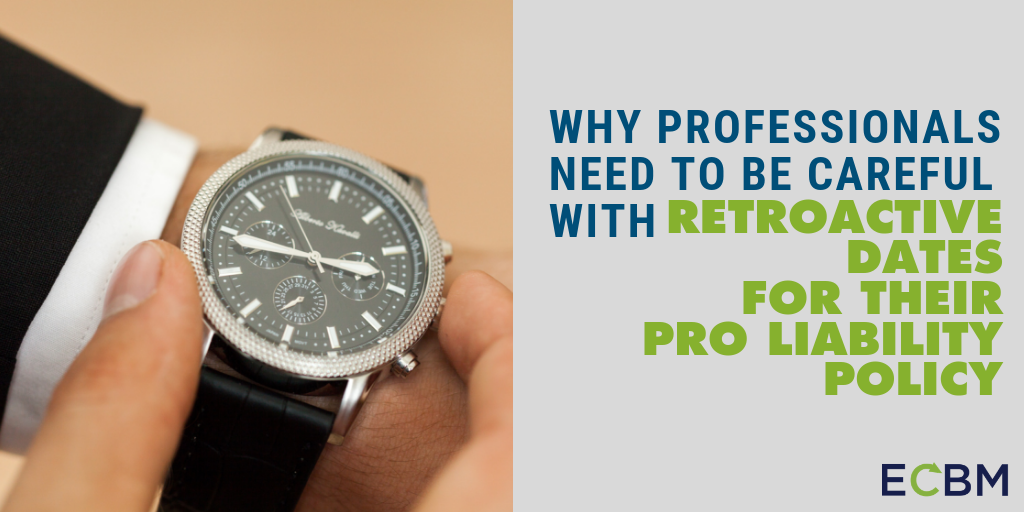
The failure to understand insurance coverage can create significant gaps in a company’s exposure. Businesses need to make sure they understand the terms of their policies when shopping for coverage to make sure what looks like a good deal isn’t paying a little less money for a lot less coverage. Professional liability policies, also known as errors and omissions coverage, can create some of these issues simply because of the way these policies vary from normal insurance coverage.
How Professional Liability Is Different Than Other Types of Insurance
Professional liability policies operate on a claims made basis. This means that the policies cover any claims that are made against the policy during the policy’s effective period, regardless of when the circumstances giving rise to the claim occurred. This stands in contrast to general liability or automobile liability policies which operate on an occurrence basis; general liability and auto liability policies cover accidents based on whether they occurred during the policy period, not based on when a claim is made against the policy.
What About Statue Of Limitations?
Because professional liability policies are written on a claims made basis, they can cover incidents of negligence stretching back a long time. The statute of limitations may limit this coverage to some extent. The statute of limitations operates as a time bar to certain lawsuits. While the exact time can vary from state to state, it is normally two years for most contract and tort claims. However, the time period for the tolling of the statute of limitations is when the plaintiff becomes aware or should have become aware of the defendant’s negligence. For latent defects, i.e. those defects that are not readily or easily apparent, that means the statute of limitations may not begin to run for several years.
What Are Retroactive Dates?
In order to limit their liability for claims stretching back many years, insurance carriers attach retroactive dates to most professional liability policies. Once a retroactive date is made part of the policy, the policy will not cover any claims that result from events that occurred prior to that date. So if a policy has a retroactive date of January 1, 2015, it will not cover any claims resulting from conducting that occurred in 2014 or earlier, even if the claim is made during the correct policy period.
Continuation of Retroactive Date
When renewing with the same insurance company, many companies will be able to keep their original retroactive date, allowing coverage to stretch back a long way. However, changing carriers to obtain a better price might impact the retroactive date. A professional liability policy with a retroactive date that only stretches back one year would significantly limit the actual coverage it provides since many errors and omissions claims are brought more than a year after the events that give rise to them. Such a policy may look cheaper in terms of premium, but only because the coverage it provides is significantly less.



